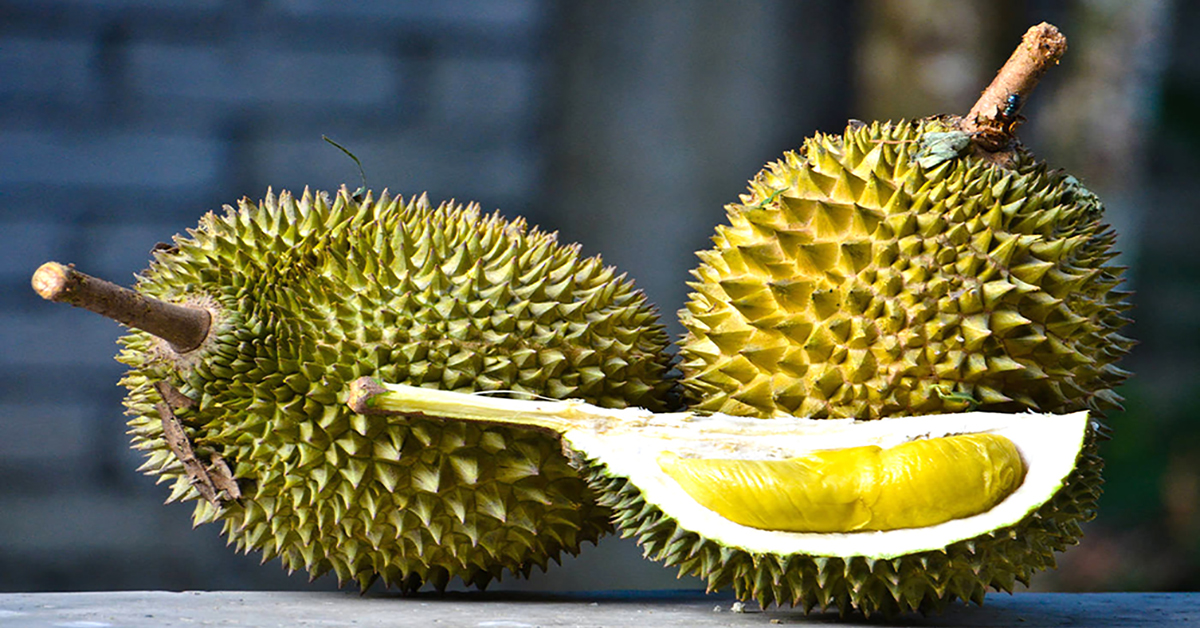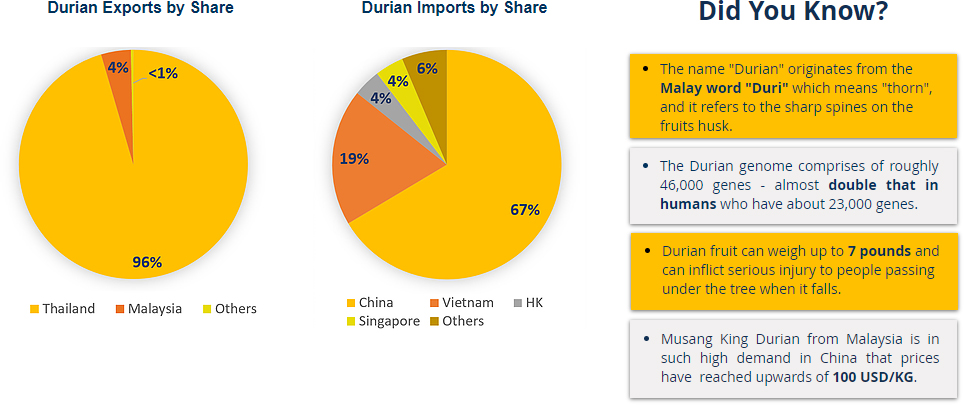Durian is one of the most exotic fruits in the world easily recognizable due to its thorn covered shell, distinctive taste and aroma. It is native to South East Asia where it is regionally known as the “King of Fruits” due to its thorn covering that resembles a king’s crown. Although once considered a niche fruit durian is now gaining mass appeal with demand, namely for the Musang King variety from Malaysia, rapidly rising.
Demand for durian is predominantly being driven by Chinese consumers and F&B companies. Chinese consumers have only recently been exposed to durian on the back of rising income levels spurring traveling abroad to Thailand, Malaysia and Singapore, where durian investment is readily sold. As a result of this exposure, imports of durian into China have now reached unprecedented levels of growth rising 23% p.a. in value since 2006. China now imports more durian in terms of value than grapes and bananas as well as three times more than it does oranges.
Consumption however is not all about China with demand also rising across Asia’s entirety with F&B companies continuously developing and expanding their durian based product offerings to capture consumer sales. Such companies include the likes of McDonalds, KFC, Nestle and Pizza Hut who often release durian products seasonally. In terms of products, F&B product offerings fall under three key categories and include: desserts such as ice cream and cakes, snacks such as chips and candies and beverages such as coffee and tea.
Although Malaysia’s Musang King is the most highly demanded durian variety in the world, supply is severely limited resulting in Thailand dominating total exports to the tune of 96%. The Malaysian government noticing the extreme demand supply imbalanced has launched efforts by Durian Harvests to capitalize on its new profitable export crop, the first of its kind since palm oils emergence in the 1960s, although it will take decades to overcome.
Musang King Durian Fast Facts ~
- Global durian trade is estimated to be 450,000 KG p.a with 67% heading to China.
- Global durian consumption is far higher than trade due to producing countries domestically consuming their produce. Total domestic consumption is roughly 1 billion KG p.a.
- China’s durian imports have been skyrocketing since 2006, growing 13% p.a. by volume and 23%.
- Further rapid growth is expected in China as its per capita consumption is only 0.21 KG which severely lags behind the regions average.Although durian is not native to Thailand, Thailand is the world’s number one exporter of durian with 96% of all exports.
- Thai durians dominate exports but are deemed poorer in quality relative to Malaysian varieties. Thai durians, such as Monthong and Kan Yau, fetch only 2-5 USD/KG overseas compared to Malaysia’s Musang King which is sold for 10-20 USD/KG on average and as high as 100 USD/KG.
- The Malaysian government in 2017 announced its Musang King durian variety as a key economic export after noticing surging overseas demand and prices.


